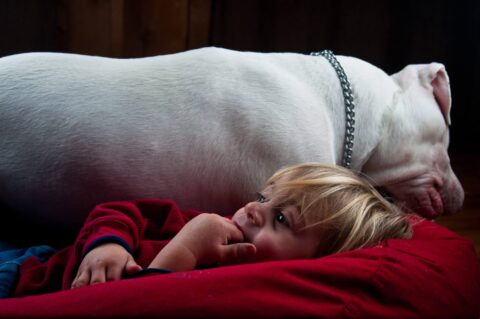Solutions
West Hollywood Committed to Plant-Based Food. Here’s What That Looks Like So Far
Climate•6 min read
They have big hearts, clownish grins, and wildly wagging tails, but pit bulls do pose tough challenges to the humane community. In 2018, nearly half of U.S. pit bulls were homeless.

• Factory Farms • Policy

Words by Ed Boks
Many people wrongfully demonize pit bulls as an inherently dangerous breed. Others overlook challenges specific to the breed in their efforts to defend people’s rights to own them. These opposing views often lead to a vitriolic debate that winds up at City Hall.
Last year, Springfield MO joined a growing number of communities struggling with the pit bull question. Finding no easy answers, city officials referred the question to residents, asking if the breeding and importation of pit bulls into Springfield should be banned. The existing pit bull population was expected to humanely decline through attrition, and no pit bull already living in the community would be affected.
Nearly 68 percent of people voted “no,” owing to the efforts of the nation’s most powerful animal welfare agencies: the ASPCA, Best Friends Animal Society and the Humane Society of the United States (HSUS).
The referendum was meant to help Springfield animal shelters deal with an overwhelming number of pit bulls. This situation is not unique to Springfield. You can visit most any shelter in America and find an inordinate number of pit bulls compared to all other breeds. And worse, caring for so many pit bulls quickly gobbles up most of shelters’ budgets and resources.
Pit bulls also die in larger numbers than any other breed in American shelters. According to Merritt Clifton, an editor for Animals 24-7, pit bulls represent about 5 percent of the total dog population in the US. However, since 2006, pit bulls have represented 33 percent of all dogs taken in by US shelters and 60 percent of all dogs euthanized.
In 2018, nearly half of the U.S. pit bull population were homeless, owing to the breed’s chronically low spay and neuter rate.
Since 1990, the sterilization rate of pit bulls has been three times lower than for other breeds, guaranteeing that they will breed at problematically high levels that cause them unnecessary suffering.
While those who denounce all pit bulls do a serious disservice to these wonderful animals, we should recognize the need for tailored strategies to reduce the escalating number of pit bulls taken in at animal shelters each year; half of which are disposed of at local landfills. According to Clifton, one out of every two pit bulls taken into animal shelters has been consistently euthanized every year for the past 40 years.
I am not a pit bull opponent. I do not support pit bull bans. I’m not writing this article to discourage anyone from adopting a pit bull. I’ve probably presided over more pit-bull rescues and adoptions than any other person in the U.S.—all without incident. They have big hearts, clownish grins and wildly wagging tails. However, after I clear away all the emotions invested in either promoting or opposing pit bulls, I have to deal with the facts.
Whenever anyone tries to call attention to the situation and advocates for spay/neuter programs designed to reduce the number of pit bulls born (only to die in shelters) they are attacked by an acrimonious pit bull advocacy. This tactic seems aimed at keeping humane leaders in line, not do a service for the animals.
It is time for the humane community to design common-sense policies to protect pit bulls from the siege of homelessness and euthanasia they experience. Without critical attention to this issue, pit bull deaths in animal shelters will continue unabated for decades to come as they have for decades past.